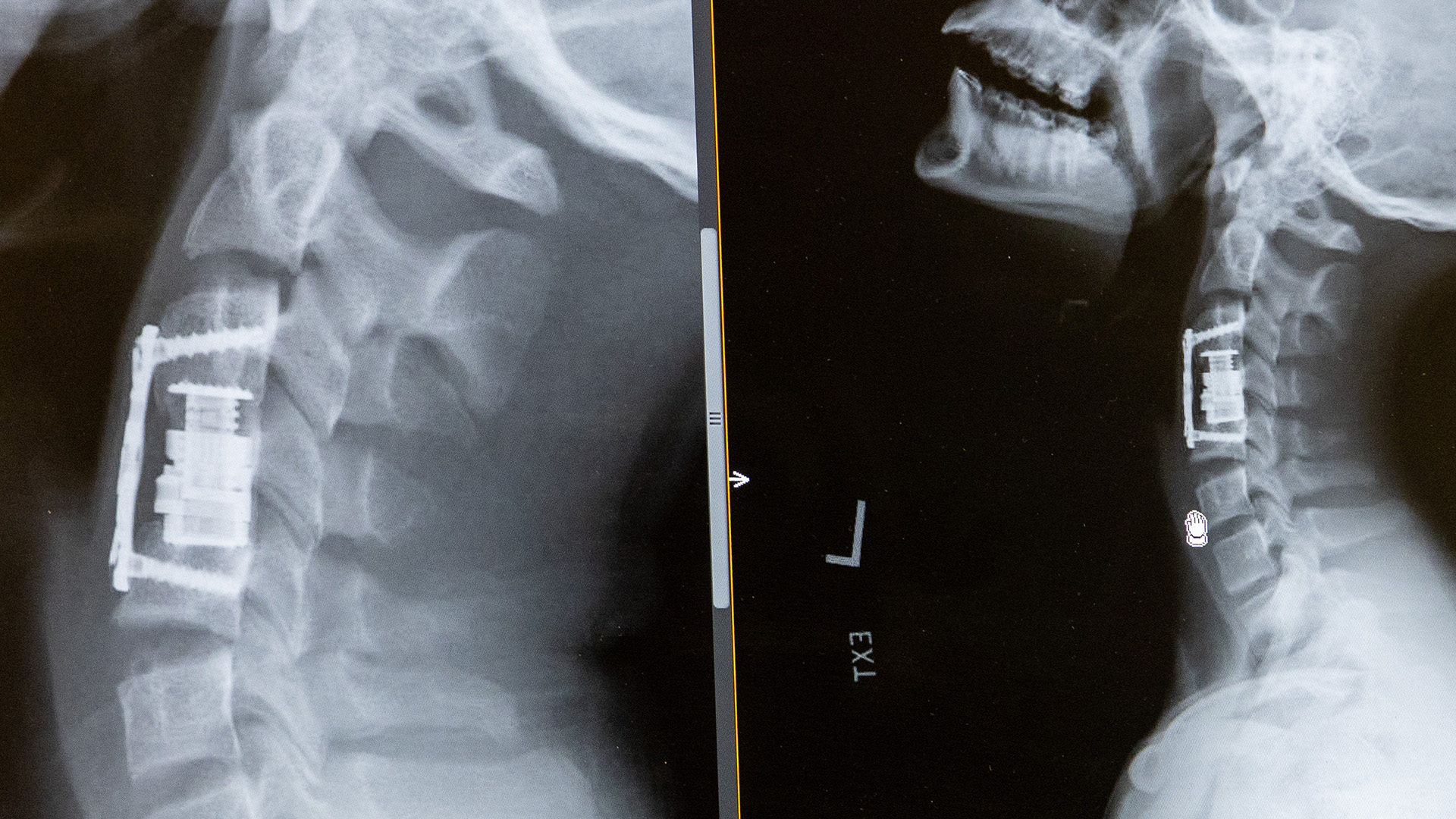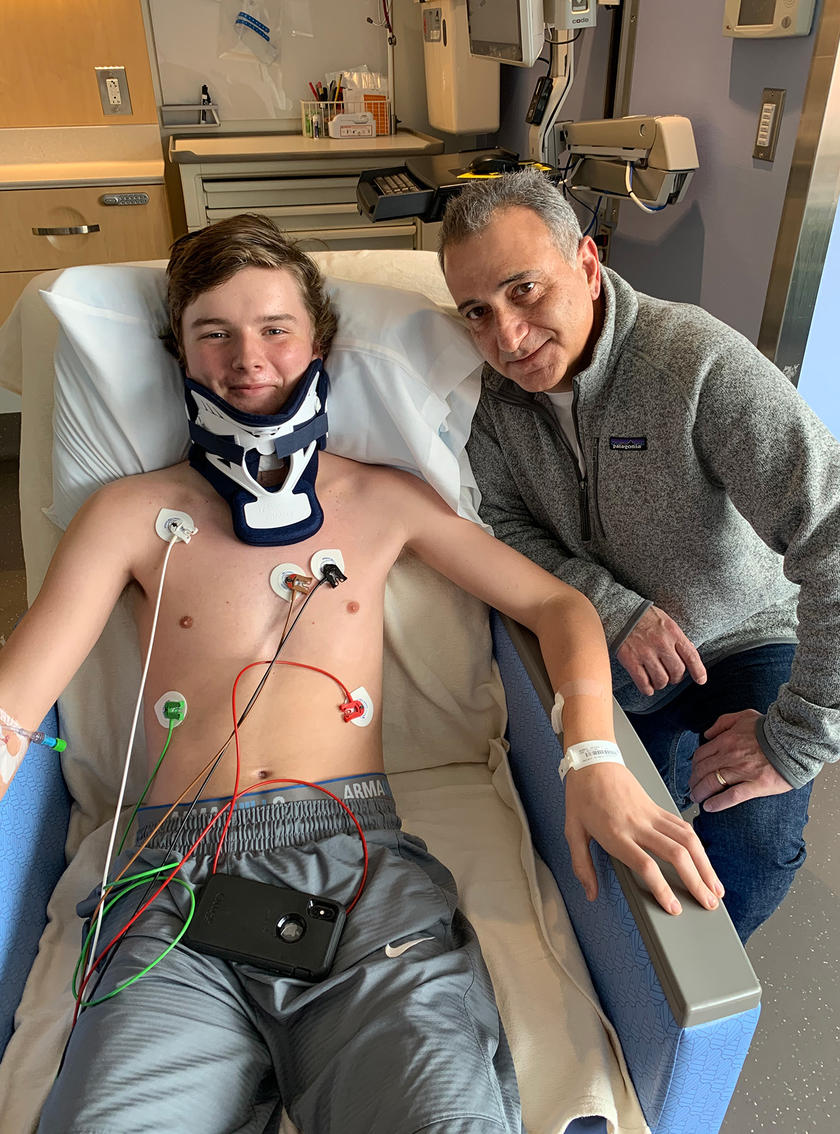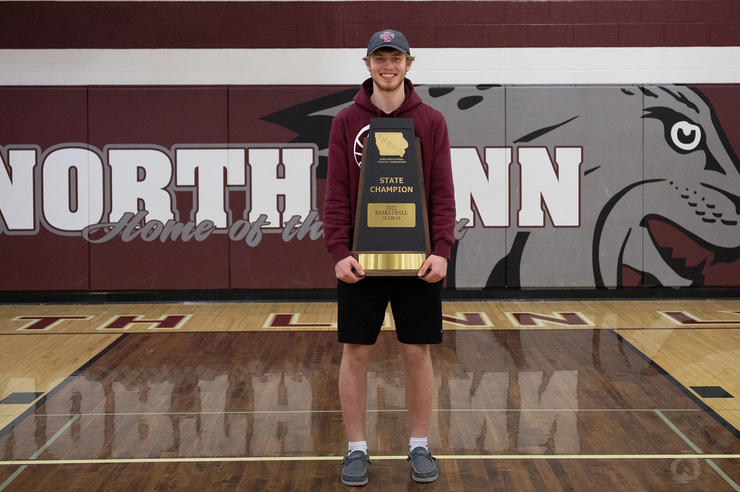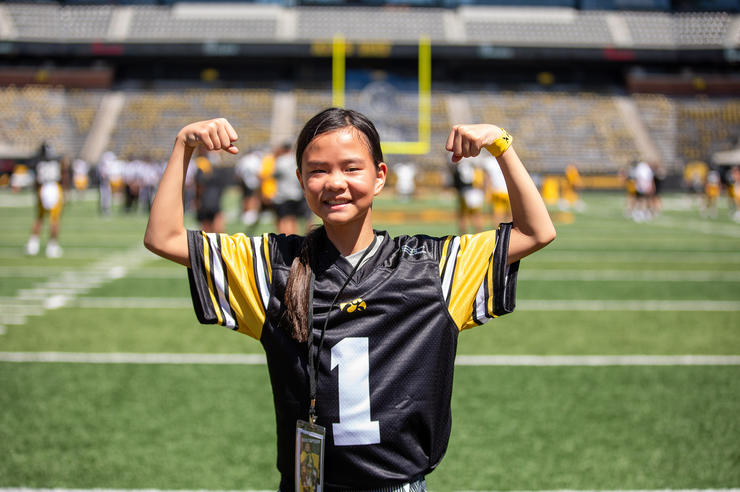Spine surgery helps young golfer get back in the swing

In summer 2023, 17-year-old Jackson Webber enjoyed a sunny day on the golf course with Cassim Igram, MD, an orthopedic surgeon with University of Iowa Health Care.
When the two first met, in January 2021, it was under very different circumstances.
Jackson, who lives in Peosta, Iowa, had been goofing around in the snow with his friends when he tried to do a front flip off an electrical box. The stunt broke the fourth vertebra in his cervical spine (C4), or neck region, and injured his spinal cord. Jackson was taken to a hospital in nearby Dubuque, then transferred to the Emergency Department at UI Hospitals & Clinics.

Undergoing a risky surgery
After an initial evaluation, UI emergency medicine staff consulted orthopedic surgery specialists—including Igram, whose expertise includes surgery to treat spinal trauma. Igram quickly determined that Jackson, whose left arm was paralyzed, would need surgery the following day.
“When you’re told your son has broken his C4 vertebra and needs emergency surgery, sheer panic sets in,” says Jackson’s mother, Jennifer Webber. “All of the ‘what-ifs’ flood into your mind. You want your child to be with a specialist, the best doctor possible.”

Jackson Webber with UI Health Care orthopedic surgeon Cassim Igram, MD, following Jackson’s surgery.
Before the surgery, the Webbers met with Igram, who was straightforward about the potential risks and uncertainty involved in the surgery, given the severity of Jackson’s injury.
Jackson had what is known as an incomplete spinal cord injury, which means that he retained some function below the damaged area of his spine. Because the C4 vertebra is in the neck, a complete injury could have led to paralysis from the neck down.
Igram notes that there is always a risk of causing more severe injury when operating on the spine.
“Anytime somebody has a spinal cord injury, we can’t reliably predict that, even with an operation, they’re going to regain function,” says Igram, a clinical professor in the UI Department of Orthopedics and Rehabilitation. “Depending on the severity, neurologic deficits can be permanent and can range from having no deficits to partial deficits to complete deficits. Jackson had pretty significant weakness in his left arm, but his injury could have resulted in weakness in all four extremities.”
During the surgery, Igram removed Jackson’s C4 vertebra in its entirety, as well as the bone fragments that were pressing on his spinal cord. He then inserted a titanium metal cylinder in place of the vertebra and a metal titanium plate to stabilize his spine.
“A few hours later, Dr. Igram told us the surgery had gone as expected,” Jennifer Webber says. “I burst into tears of joy.”
One day after surgery, Jackson was walking independently, and he was released to go home the following day. He received outpatient physical therapy at a facility closer to the Webbers’ hometown to regain mobility, dexterity, and strength in his arm and hand. Over time, the deficits in his arm diminished, and he regained arm function completely.

Back on the golf course and looking ahead to college
One hundred days after his surgery, Jackson completed his physical therapy program and was able to get back on the golf course—his favorite place to be.
Jackson has been playing golf since age 4 and held a ranking in the state at the time of his injury. Igram knew that golf was Jackson’s favorite sport, so at every checkup he would ask about his golf game. Once Jackson recovered, the Webbers invited Igram for a day on the links.
“He’s an outstanding golfer,” Igram says. “Much better than me!”
The University of Iowa Health Care spine surgery team includes neurosurgeons and orthopedic surgeons with years of intensive training and experience. They specialize in back pain and conditions of the spine and spinal cord.
Jackson will attend the University of Iowa in the fall and plans to pursue a career as an athletic trainer—a choice inspired by his experience with UI Health Care.
Jennifer Webber remains grateful that her son received such expertise and care.
“Everyone was amazing,” she says. “As residents of Iowa, we are extremely fortunate to have UI Hospitals & Clinics and UI Stead Family Children’s Hospital as a resource for high-level care. With an injury so traumatic, you want to know that your child is in the best possible place. Dr. Igram is our hero, and we will forever be in debt to him for saving our son.”


